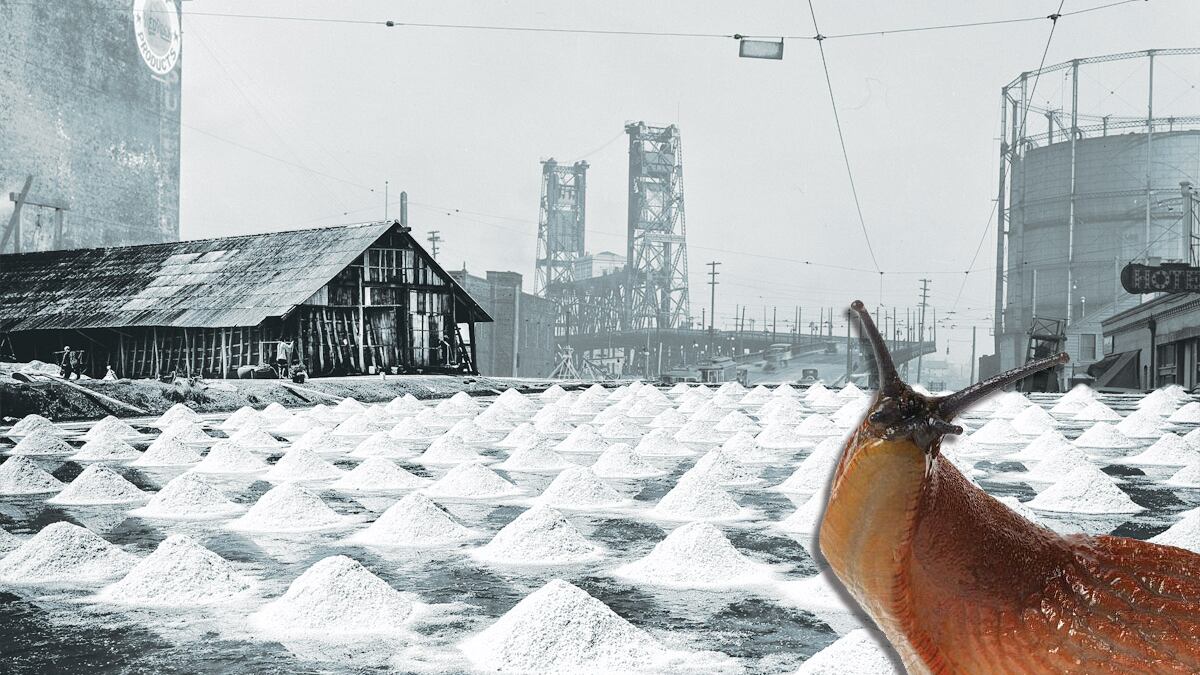We Portlanders have suffered an unusually harsh winter, and have endured several inches of snow, which rendered our roads impassable and our city almost uninhabitable. But worse than the ordeal of the snow and ice has been the never-ending barrage of commentary from smug East Coast transplants. Even The Wall Street Journal has seen fit to report on our weather this winter: "Have you people never heard of salt?"
Related: Portland's Inability To Handle Snow Amuses the Wall Street Journal
Let me explain something: We leave our roads unsalted by design out of a sense of responsibility to our neighbors and future generations of Portlanders, not for lack of preparedness or misguided belief system. In fact, our beliefs could hardly be more well-guided. Rock salt is extremely dangerous for many reasons. If you have not personally had any run-ins with errant rock salt, consider yourself lucky. Do you know how easily a piece of rock salt can be kicked into the air by a car tire, a boot or a strong gust of wind? And how likely it is that one of these little pieces of airborne rock salt will land in your open mouth, your eye or an unbandaged wound? To prevent one of these ambushes, it is in our best interest to minimize the amount of rock salt on the ground at any one time.
I haven't yet mentioned the ecological havoc that rock salt has already wrought on Portland. Many years ago, Portland was the location of one of the biggest salt disasters in history. It was the end of a grueling winter where Portland had been battered by one snowstorm after another. Frustrated Mayor Fred Peterson decided enough was enough. So, he ordered rock salt deployed on a trial basis in a few carefully vetted areas of town.
Unfortunately, the vetting process was not careful enough, and one of the salted areas in Northwest Portland was an area known to be the one and only habitat for a unique species of gastropod called the oyster slug. Eyewitnesses recall the salt trucks arriving one morning unannounced. The salt was applied, and the snow melted and disappeared almost immediately, but the writhing slugs and slug carcasses remained for weeks, sizzling like bacon.
Portland was awarded the Guinness World Record for "Fastest Slug Extinction," a glancing shot to the biodiversity of the region but a landed haymaker right smack into the solar plexus of the local economy.
First, these remarkable slugs were prized by hunters who made a pretty penny selling them live at market to chefs and aficionados who enjoyed their exquisite, creamy flavor.
Beyond that, the oyster slug was truly a biological marvel, the only slug species known to be able to produce pearls. For those curious, a collection of 19th-century slug-pearl jewelry can be seen by appointment at the Ancient Fossil Annex of the Oregon Historical Society. They're slightly smaller than those from actual oysters, but to my discerning eye no less lustrous. Many hunters specialized in extracting the pearls within and selling to one of the several downtown clearinghouses that specialized in the ersatz slug-pearl trade.
The sad fate of the oyster slug serves as a cautionary tale about the dangers of over-seasoning our land. Though you may not have heard of the oyster slug before today, the city of Portland honored the species with a fitting tribute by officially recognizing the part of Northwest Portland where the slugs once nested, along with the old warehouses where their hidden gems were extracted and processed, an area we now call the "Pearl District."
